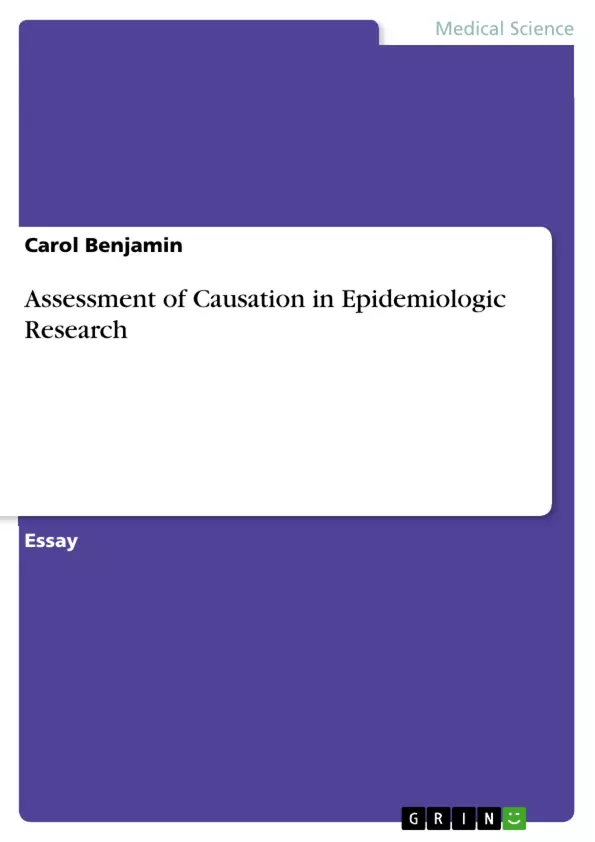In this assignment I assessed the relationship between soy consumption and breast cancer which has been studied by Sacks et al (2006), Messina & Loprinzi (2001), Wu et al (2008), and Trock et al (2006). I used the Bradford Hill criteria and assess whether soy has an inverse causal relationship with breast cancer.
Inhaltsverzeichnis (Table of Contents)
- Strength of Association
- Consistency of Association
- Specificity of Association
- Temporality Relationship
Zielsetzung und Themenschwerpunkte (Objectives and Key Themes)
This assignment examines the relationship between soy consumption and breast cancer, utilizing the Bradford Hill criteria to assess whether soy has an inverse causal relationship with the disease. The analysis draws upon research from various sources, including Sacks et al (2006), Messina & Loprinzi (2001), Wu et al (2008), and Trock et al (2006).
- The strength of the association between soy consumption and breast cancer risk.
- The consistency of the association across different studies.
- The specificity of the association to breast cancer, considering potential effects on other health outcomes.
- The temporal relationship between soy consumption and breast cancer outcomes.
Zusammenfassung der Kapitel (Chapter Summaries)
- Strength of Association: The analysis explores the relationship between soy consumption and breast cancer risk, focusing on the relative risk and odds ratios. It reviews studies by Trock et al. (2006) and others, examining the association between high soy intake and breast cancer risk, particularly in Asian countries. The authors highlight the potential estrogenic effects of soy constituents and the variability in epidemiologic study results.
- Consistency of Association: This section examines the consistency of the observed association between soy consumption and breast cancer across multiple studies. The author reviews research by Messina and Loprinzi (2001), Weed (2000), and others, focusing on the effects of different soy products on mammary cancer development in animals. The discussion highlights the inconsistency of some findings but emphasizes the overall relationship between soy exposure and breast cancer.
- Specificity of Association: The chapter explores the specific relationship between soy consumption and breast cancer, differentiating its potential effects from those on other health outcomes. It discusses the research by Sacks et al. (2006) on the impact of soy protein on cardiovascular disease risk factors, highlighting its potential to lower LDL cholesterol levels while noting its limited impact on other cardiovascular risk factors.
- Temporality Relationship: This section focuses on the temporal relationship between soy consumption and breast cancer outcomes. The author presents evidence from cohort studies, arguing that they are less prone to information bias and therefore provide a convincing perspective on temporality. It cites an article titled "Soy Food Intake Associated with Better Breast Cancer Outcomes," showing that breast cancer recurrence and mortality are lower among women consuming soy foods after their initial diagnosis. This study highlights the importance of soy consumption preceding the development of breast cancer.
Schlüsselwörter (Keywords)
The primary focus of this study is the assessment of the causal relationship between soy consumption and breast cancer risk using the Bradford Hill criteria. The key themes include the strength, consistency, specificity, and temporality of the association between soy intake and breast cancer development, particularly in relation to estrogenic effects, animal model studies, and the impact of soy consumption on cardiovascular disease risk factors.
- Citation du texte
- Carol Benjamin (Auteur), 2009, Assessment of Causation in Epidemiologic Research, Munich, GRIN Verlag, https://www.grin.com/document/265470



